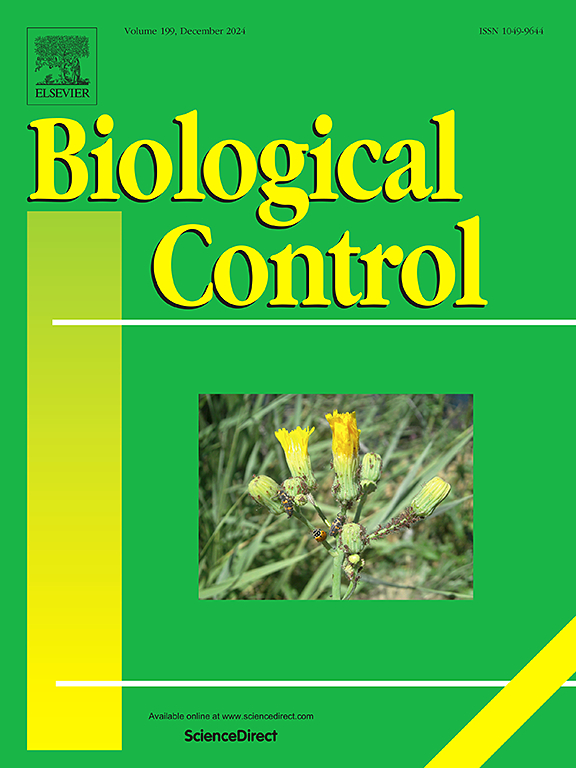Ecosystem functions such as biological pest control are mediated by the richness and abundance of service providers i.e., biological control agents (BCAs), relative contributions of individual taxa and community structure. This is especially relevant in the native range of agricultural herbivores, where a speciose community of co-evolved BCAs can prevent them from attaining pest status. Here, we use a powerful graphical approach to assess the functional structure of BCA communities of the fall armyworm (FAW) Spodoptera frugiperda (Lepidoptera: Noctuidae) on maize in the Neotropics. Drawing upon a curated database of all-time field and laboratory studies, we graphed patterns in the functional contribution, abundance and niche breadth for a respective 69, 53 and 3 taxa of resident parasitoids, predators and pathogens. Regardless of varying taxon coverage and rigor of the underlying studies, functional structure follows a saturating relationship in which the first three taxa account for 90–98% of aggregate biological control function. Abundance-functionality matrices prove critically incomplete, as more than 80% of invertebrate taxa miss empirically derived efficiency metrics while associated FAW infestation data are scarce. Despite its methodological shortfalls and data gaps, our work pinpoints Chelonus insularis, several taxa of egg parasitoids, Doru spp. and Orius spp. as taxa with outsized (average) functionality and conservation potential. This is also exemplified by the highly variable aggregate function across studies, with dispersion indices of 1.52 and 2.14 for invertebrate BCAs. Our work underlines the critical importance of functional ecology research, networked trials and standardized methodologies in advancing conservation biological control globally.
DOI:
https://doi.org/10.1016/j.biocontrol.2024.105640
Jumlah Kutipan Dimensi:

Tahun publikasi
2024
Penulis
Wyckhuys, K.A.G.; Akutse, K.S.; Amalin, D.M.; Araj, S.-E.; Barrera, G.; Joy B. Beltran, M.; Ben Fekih, I.; Calatayud, P.-A.; Cicero, L.; Cokola, M.C.; Colmenarez, Y.C.; Dessauvages, K.; Dubois, T.; Durocher-Granger, L.; Espinel, C.; Fernández-Triana, J.L.; Francis, F.; Gómez, J.; Haddi, K.; Harrison, R.D.; Haseeb, M.; Iwanicki, N.S.A.; Jaber, L.R.; Khamis, F.M.; Legaspi, J.C.; Lomeli-Flores, R.J.; Lopes, R.B.; Lyu, B.; Montoya-Lerma, J.; Nguyen, T.D.; Nurkomar, I.; Perier, J.D.; Pozsgai, G.; Ramírez-Romero, R.; Robinson-Baker, A.S.; Sanchez-Garcia, F.J.; Silveira, L.C.; Simeon, L.; Solter, L.F.; Santos-Amaya, O.F.; de Souza Tavares, W.; Trabanino, R.; Vásquez, C.; Wang, Z.; Wengrat, A.P.G.S.; Zang, L.-S.; Zhang, W.; Zimba, K.J.; Wu, K.; Elkahky, M.
Bahasa
English
Kata kunci
armyworms, microbial community, biodiversity conservation, agroecology, intensification, species richness

















